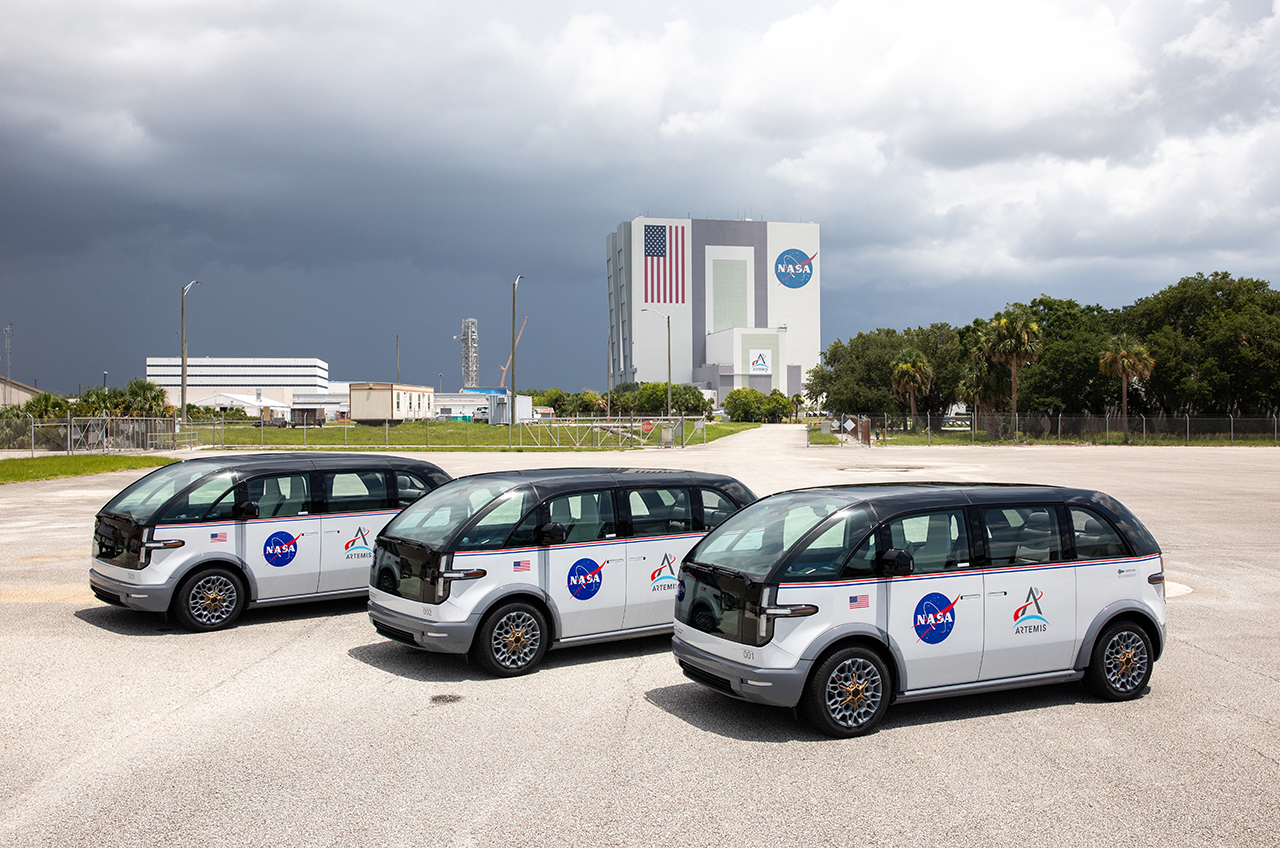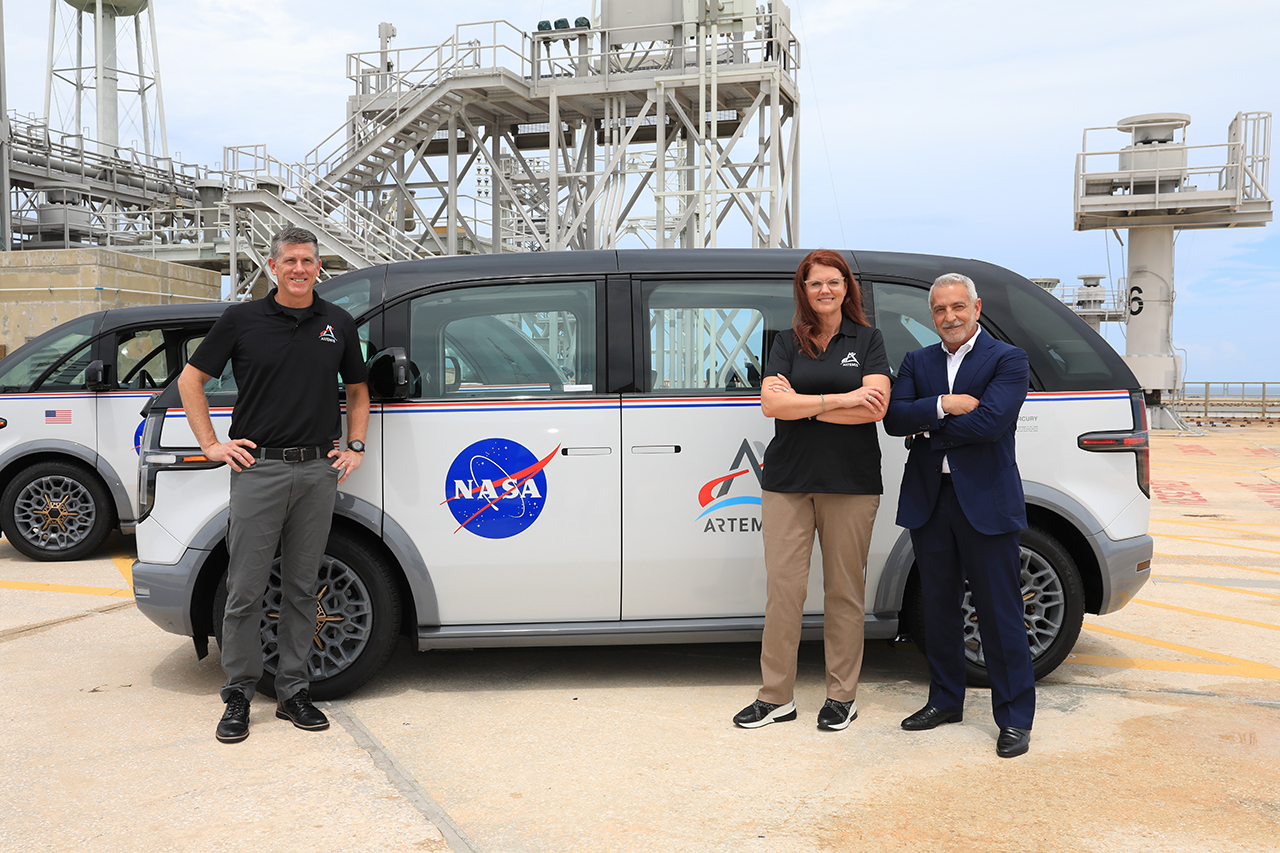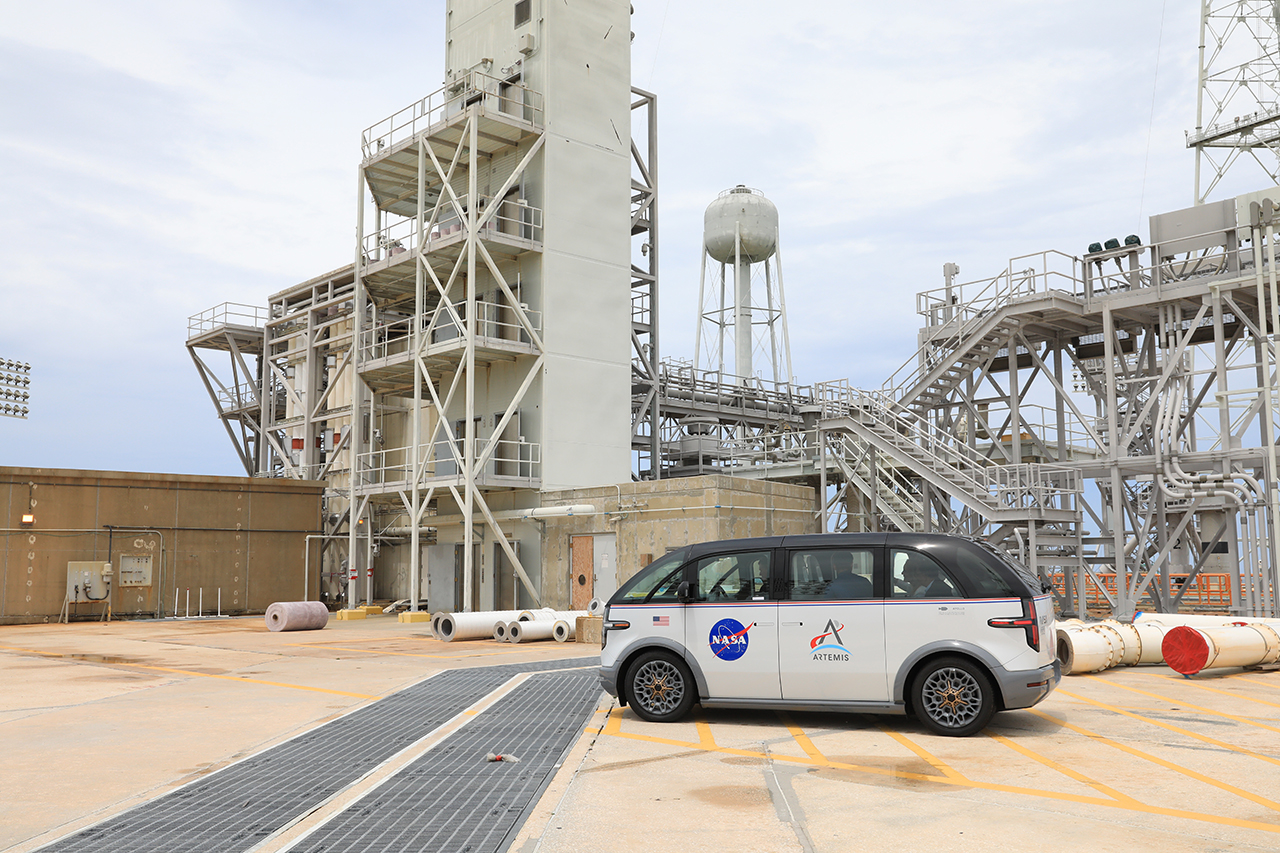NASA's new Artemis 'astrovans' arrive for use by moon-bound crews
The new vehicles are customized to meet NASA's needs for its Artemis launches while also paying homage to the agency’s human spaceflight history.

Attention Artemis astronauts: Your new rides to the launch pad have arrived.
Canoo Technologies on Tuesday (July 11) delivered three specially designed, fully electric crew transportation vehicles (CTV) to NASA's Kennedy Space Center in Florida. The new trio of "astrovans" will enter service as soon as late 2024, when the four astronauts assigned to NASA's Artemis 2 mission launch on the first crewed mission to fly around the moon in more than 50 years.
"I have no doubt everyone who sees these new vehicles will feel the same sense of pride I have for this next endeavor of crewed Artemis missions," said Charlie Blackwell-Thompson, NASA's Artemis launch director, in a statement.
Canoo based the new NASA crew transports on its LV, or Lifestyle Vehicle, which the company describes as having a "multi-purpose platform to maximize cabin space, utility and productivity on a compact footprint." The three vehicles can carry four astronauts in their Orion crew survival system pressure suits and support personnel (including a suit technician), as well as have the room for specialized equipment for the trip from Kennedy's Neil A. Armstrong Operations and Checkout Building to Complex 39B, where the crew's Space Launch System (SLS) rocket and Orion spacecraft will be poised for liftoff.
Related: NASA's Artemis program: Everything you need to know

Externally, the new Artemis vehicles appear to be somewhat of a cross between the livery of the Apollo astronaut transfer van with the sleek outline of the shuttle-era Airstream — only with a more modern look accentuated by their street-view windows and panoramic glass roofs.
Many of the design aspects, from the interior and exterior markings to the color of the vehicles to the wheel wells, were chosen by a team that included Blackwell-Thompson and members of NASA's Astronaut Office at Johnson Space Center in Houston. Canoo, which bills itself as an advanced mobility company, was awarded the contract to manufacture the three vehicles in April 2022.
"The collaboration between Canoo and our NASA representatives focused on the crews' safety and comfort on the way to the pad," Blackwell-Thompson said.
For its part, Canoo chairman and CEO Tony Aquila said his company was proud to be a partner with NASA in "one of the world's greatest endeavors."
"The selection of our innovative technologies by NASA to take a diverse team of astronauts to the moon showcases a great commitment to sustainable transportation. We are inspired by NASA's pioneering and trailblazing spirit," said Aquila in a statement.

The Canoo CTVs join a new generation of astrovans that include SpaceX's fleet of Tesla Model X electric cars used to transport Dragon crews and a customized Airstream that will take astronauts flying on Boeing's Starliner to the launch pad.
The Apollo and space shuttle-era vans are now on display at the Kennedy Space Center Visitor Complex, in the Apollo/Saturn V Center and Space Shuttle Atlantis exhibit, respectively.
Ahead of being used by Artemis 2 crew members Reid Wiseman, Victor Glover and Christina Koch of NASA and Jeremy Hansen of the Canadian Space Agency, the new CTV fleet will be used for astronaut training exercises at Kennedy Space Center. The three vehicles will then be used for future missions that will explore the moon's south pole or visit the Gateway in lunar orbit, beginning with Artemis 3, which NASA, following the White House's direction, has said will land the first woman and first person of color on the moon.
Follow collectSPACE.com on Facebook and on Twitter at @collectSPACE. Copyright 2023 collectSPACE.com. All rights reserved.
Get the Space.com Newsletter
Breaking space news, the latest updates on rocket launches, skywatching events and more!
Join our Space Forums to keep talking space on the latest missions, night sky and more! And if you have a news tip, correction or comment, let us know at: community@space.com.

Robert Pearlman is a space historian, journalist and the founder and editor of collectSPACE.com, a daily news publication and community devoted to space history with a particular focus on how and where space exploration intersects with pop culture. Pearlman is also a contributing writer for Space.com and co-author of "Space Stations: The Art, Science, and Reality of Working in Space” published by Smithsonian Books in 2018.In 2009, he was inducted into the U.S. Space Camp Hall of Fame in Huntsville, Alabama. In 2021, he was honored by the American Astronautical Society with the Ordway Award for Sustained Excellence in Spaceflight History. In 2023, the National Space Club Florida Committee recognized Pearlman with the Kolcum News and Communications Award for excellence in telling the space story along the Space Coast and throughout the world.

